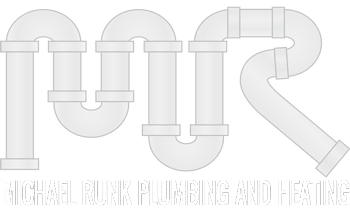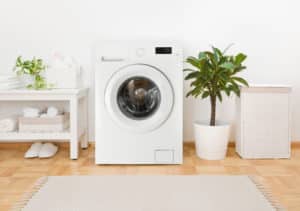Installing a new washing machine can make a big difference in your day-to-day routine. Whether installing a washing machine in your home for the first time, replacing a broken washer, or renovating your laundry room, hooking up a washing machine can be a bit challenging. Even if you have an instruction manual, it can contain unfamiliar technical terms that are difficult to understand. Take a look at this simple, easy-to-read guide for installing a new washer.
Before You Begin
Before you start installing your new washing machine, ensure you have access to these fundamental things:
Electricity
Your washing machine will not operate without electricity. Be sure to check that you have a 120-volt outlet with ground fault protection before continuing to install the washing machine.
Water Supply
Your washing machine also requires water to operate. Ideally, you should install the machine near the water heater so that it can tap into the outlet and inlet lines for your hot and cold water supply. If you are unable to install your new washing machine close to the water heater, use the ¾ inch main cold and hot water lines and run them along the wall behind the machine.
Drainage
After your washing machine fills up with water, it needs somewhere to drain it out. Check if there is a standpipe and a P-trap to drain all the water your washing machine collects.
Steps to Installing a New Washer
Once you’ve done your preliminary checks, you can start the installation process.
Here is a step-by-step guide for installing your new washer.
- Prepare the area
Start by checking the area where you plan on installing the washing machine. Measure the area to guarantee a proper fit, check the floors to ensure they are level and sturdy, and see if there are enough outlets and lines to connect to the washer.
- Clean the faucets
Next, run water through the faucets, using a bucket or tub to catch the water. This step ensures that any debris gets flushed out ahead of time and won’t clog your new washing machine.
- Move the Washer into Place
Once you’ve cleaned the faucets, place your new washer into position, leaving enough room behind it to plug in the necessary pipes and wiring.
- Connect Water Supply
Next, connect the hot and cold water supply hoses to the correct faucets and tighten them. You will want them tight enough that you can’t accidentally unscrew them but not overly tight. After the hoses are connected to the faucets, attatch them to the washing machine.
- Check for Leaks
Checking for leaks is an important part of the installation process, as unnoticed leaks can cause problems for your home. Turn on the water supply and open the taps to check for leaks. If you don’t see any water leaks, continue to the next step.
- Connect the Drain Hose
If your washing machine doesn’t come with a pre-connected drain hose, connect it using a screwdriver.
- Feed the Drain Hose into the Drain Receptacle
Depending on your home’s plumbing, you may need to run the drain hose into a drain in the wall, floor, or a laundry sink.
- Plug in the Washer
The last step to installing your new washing machine is plugging it into an electrical outlet. Remember, a 120-volt outlet with ground fault protection is required.
Leave it to a Professional
While installing a washing machine is doable for a determined DIYer, why not let the experts at Michael Runk Plumbing and Heating do it for you? We’ll ensure that your new washer is installed properly and won’t cause any future problems. Contact us today to learn more and schedule an appointment.

